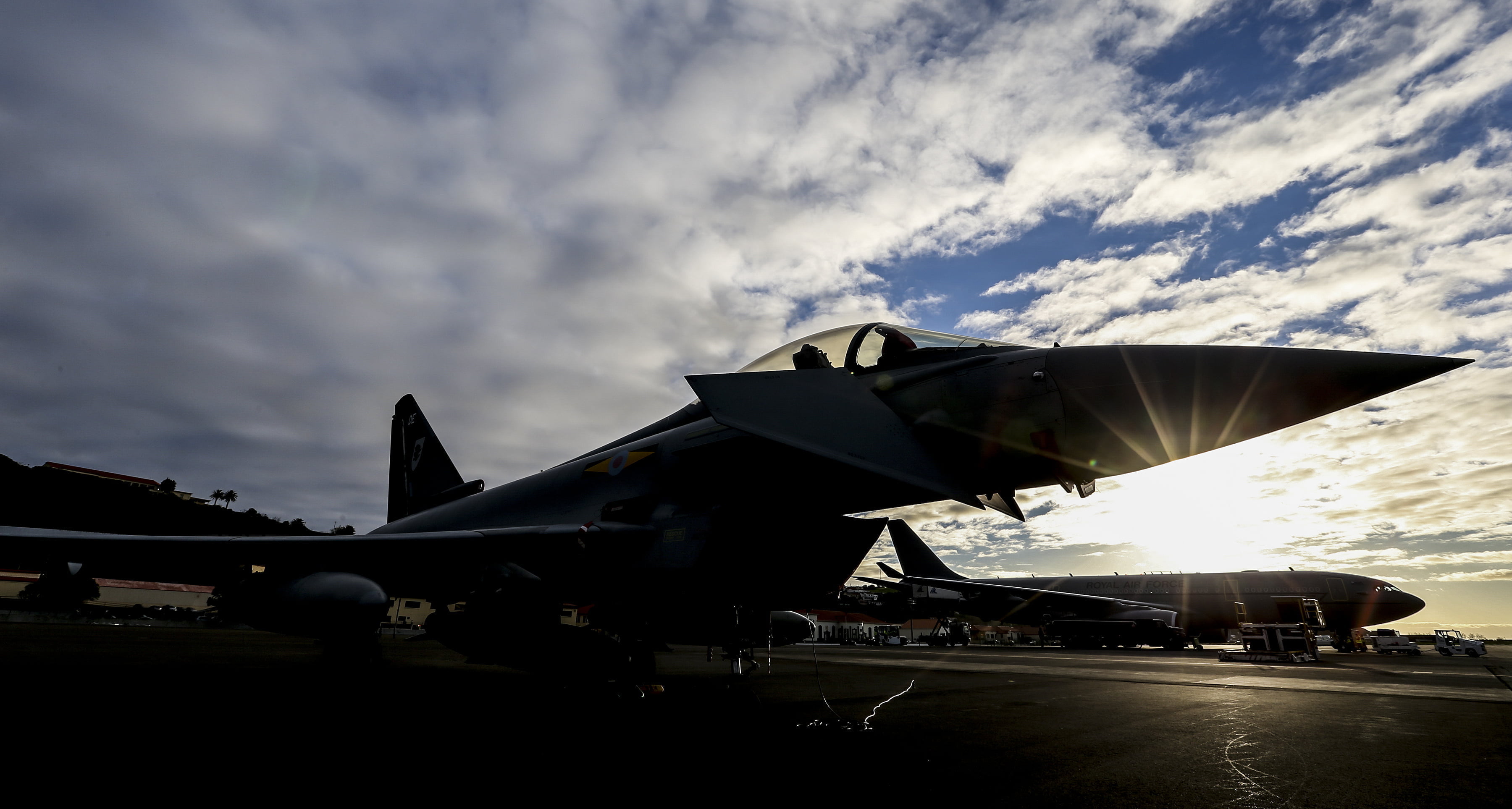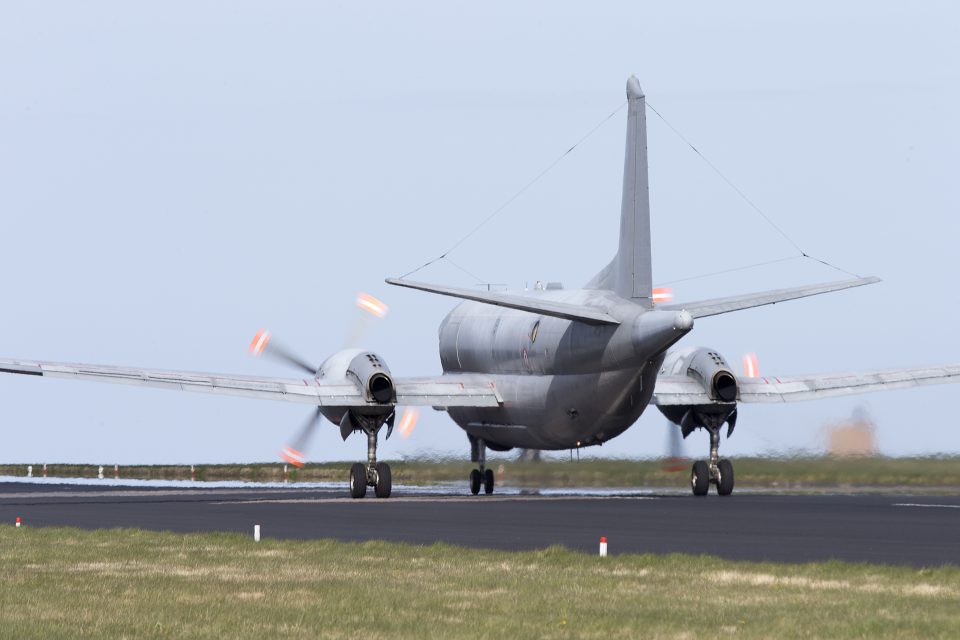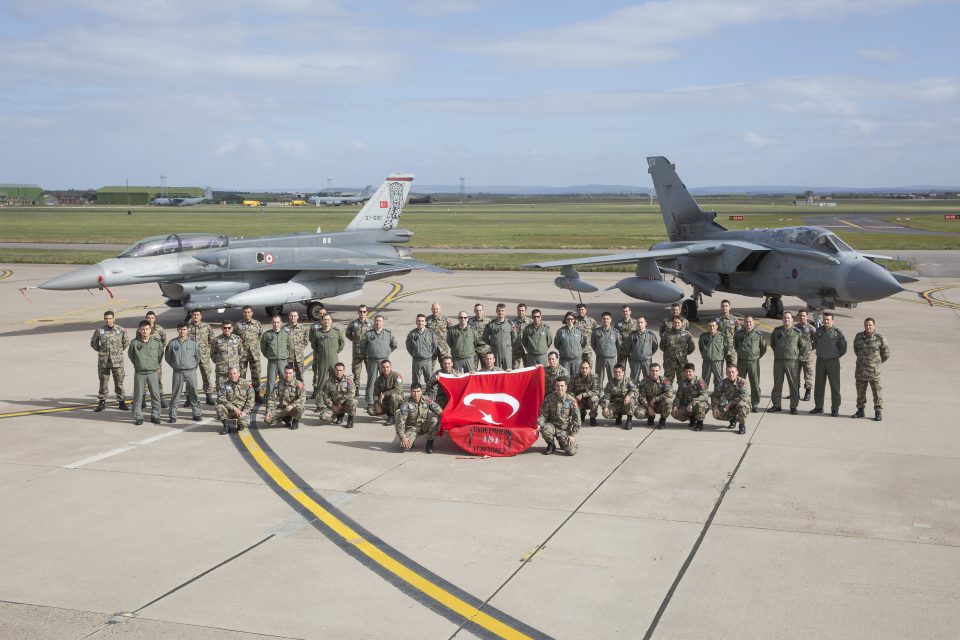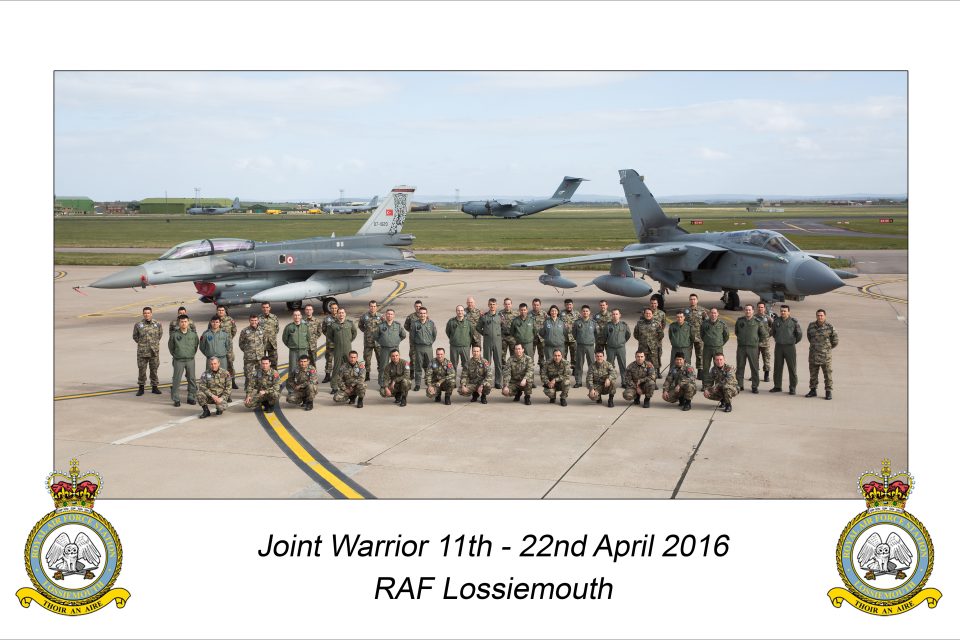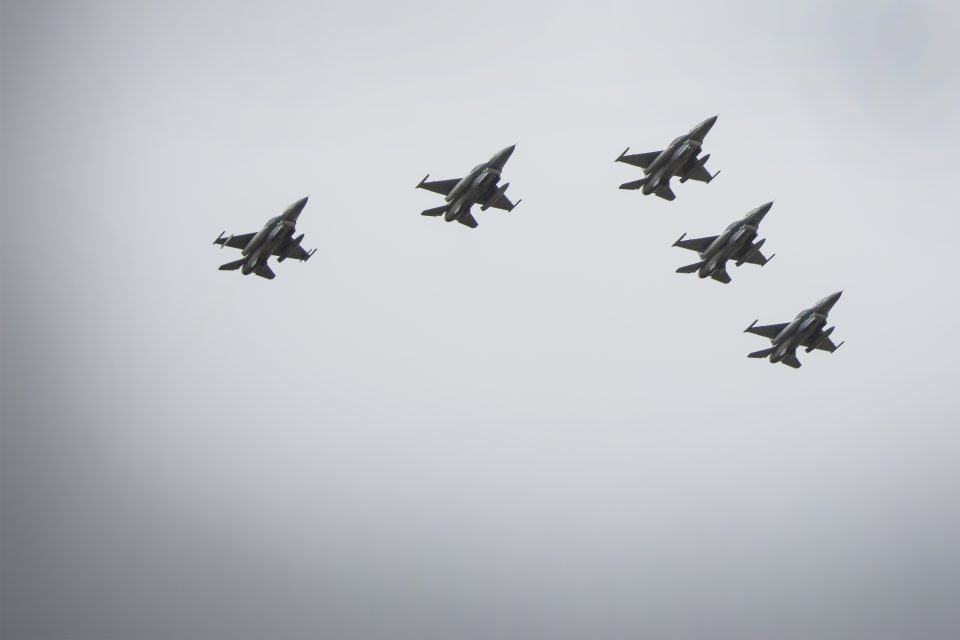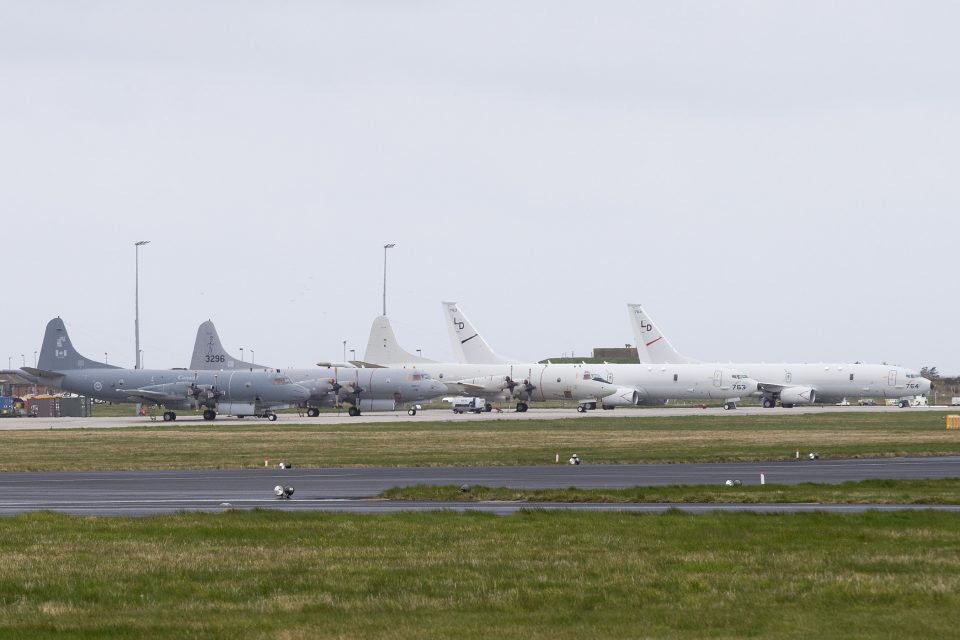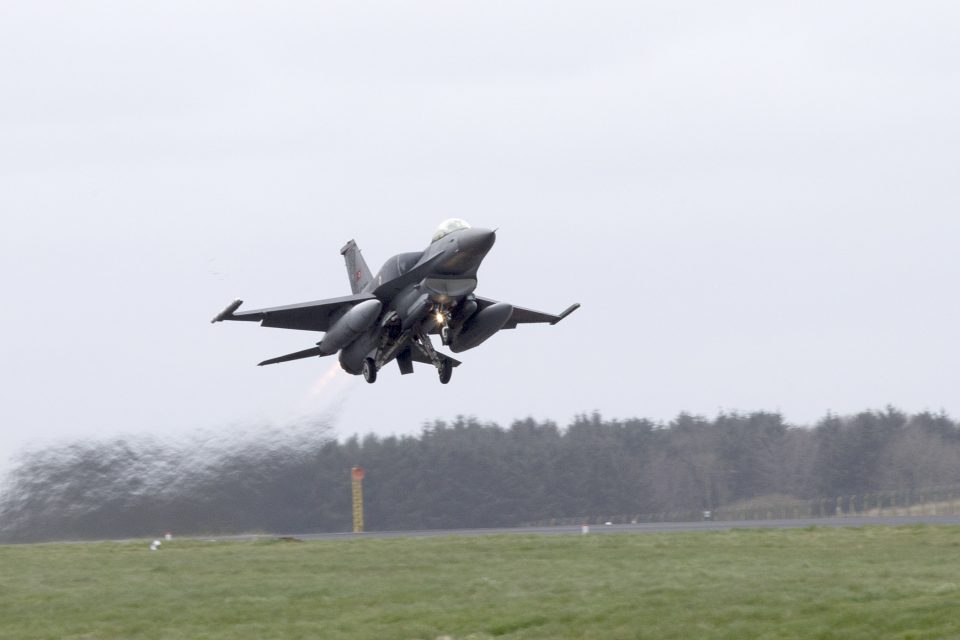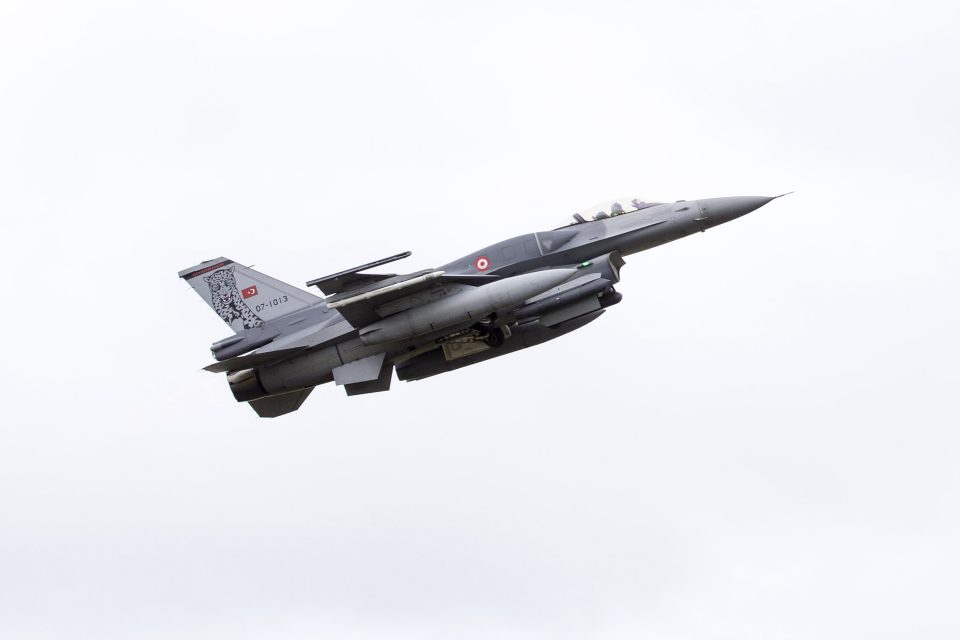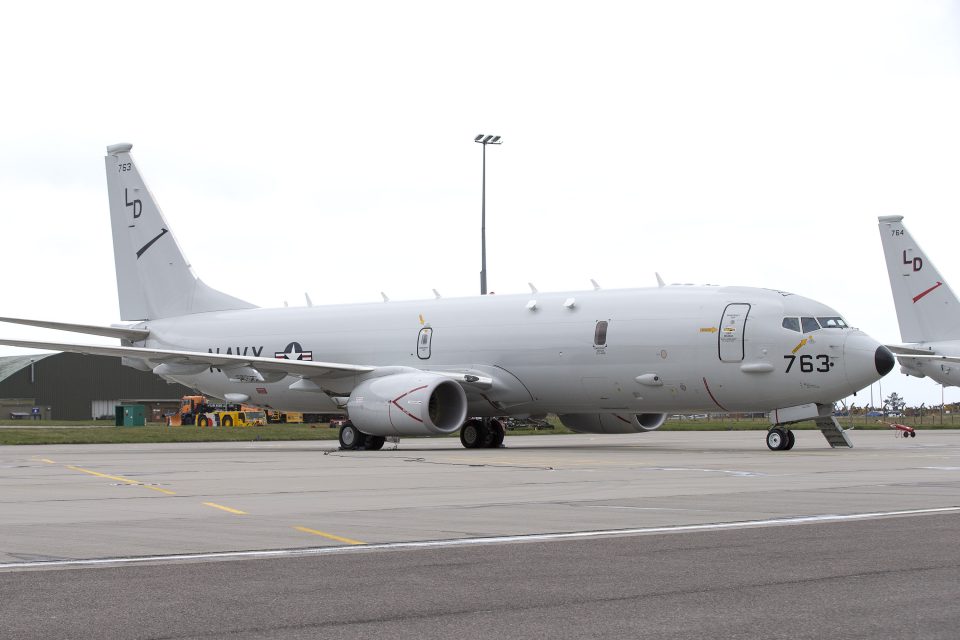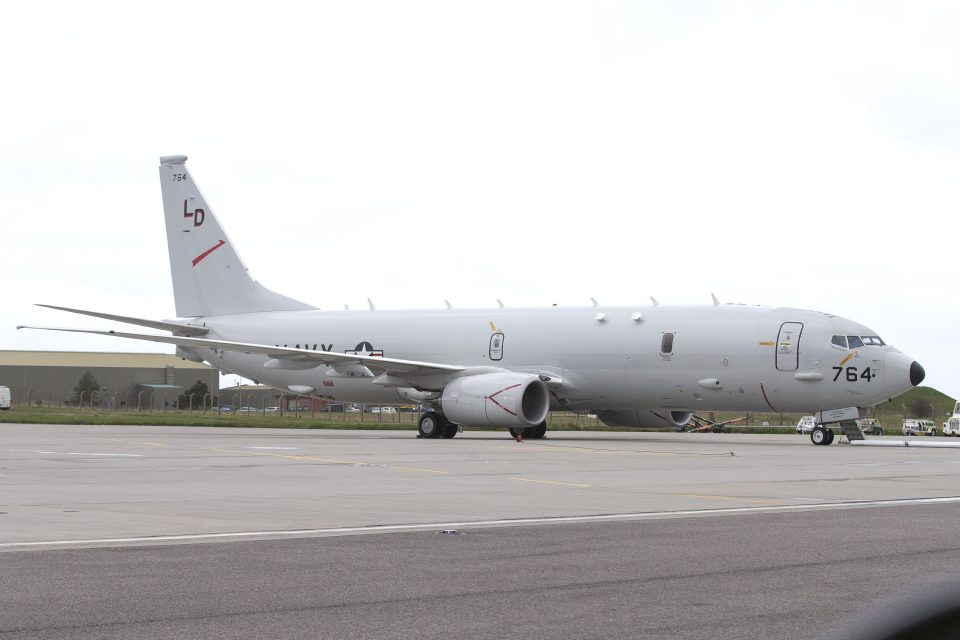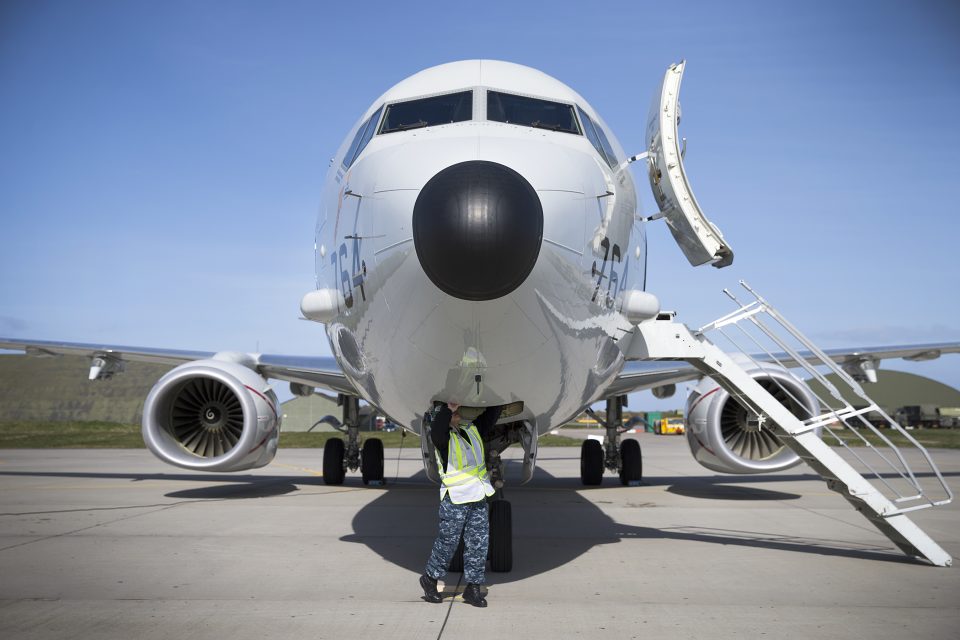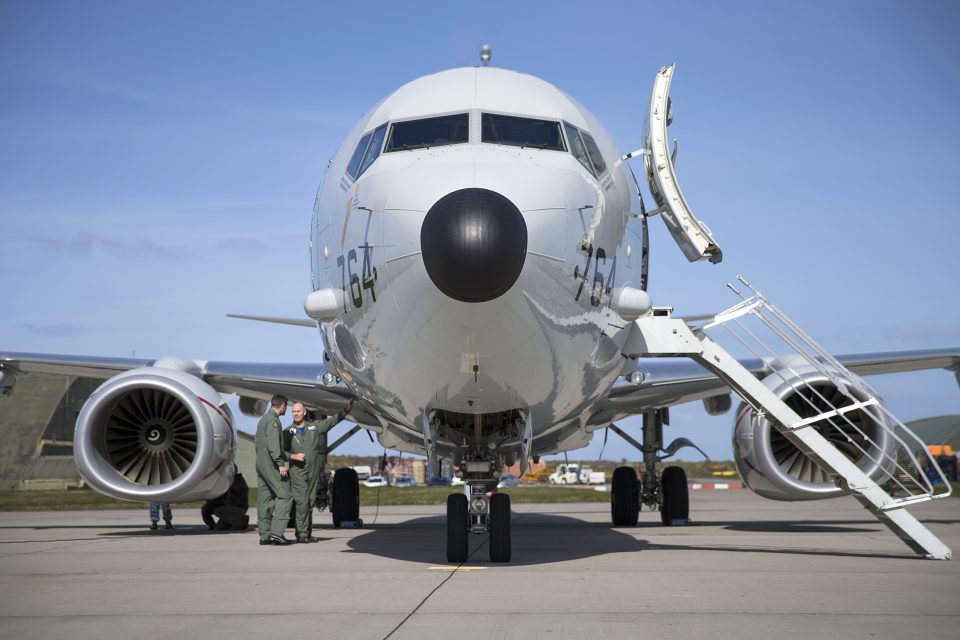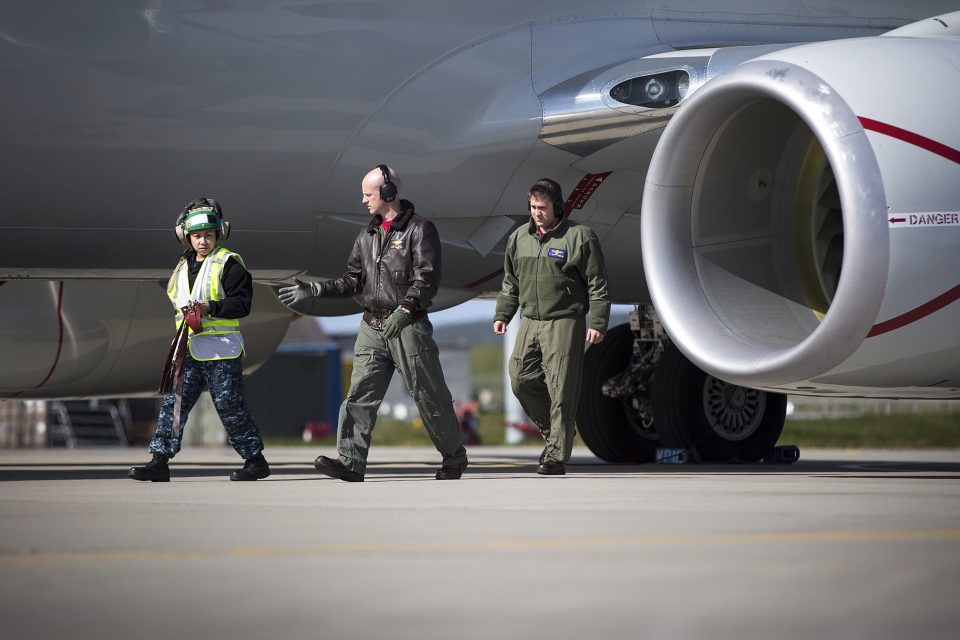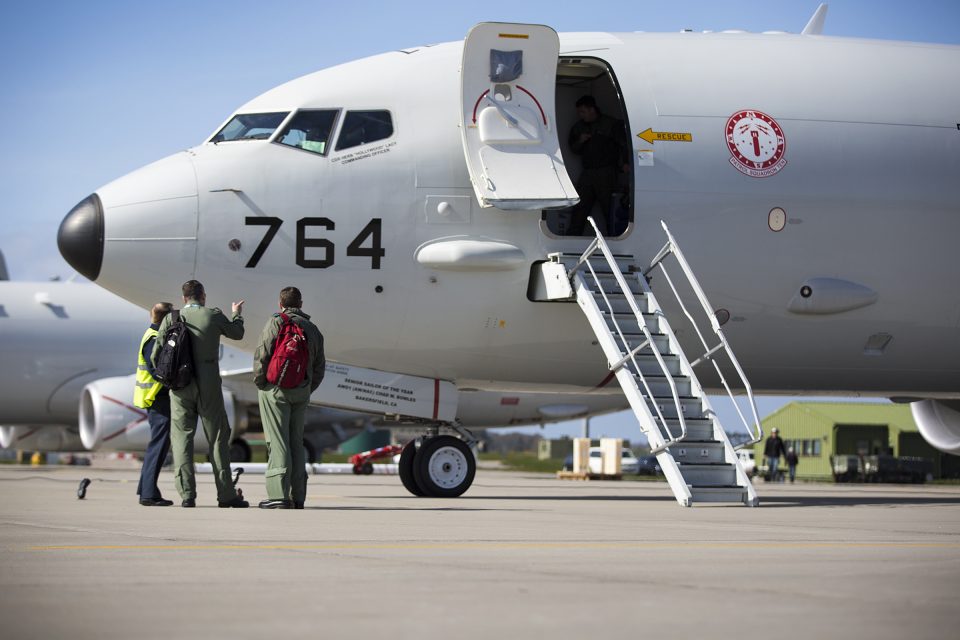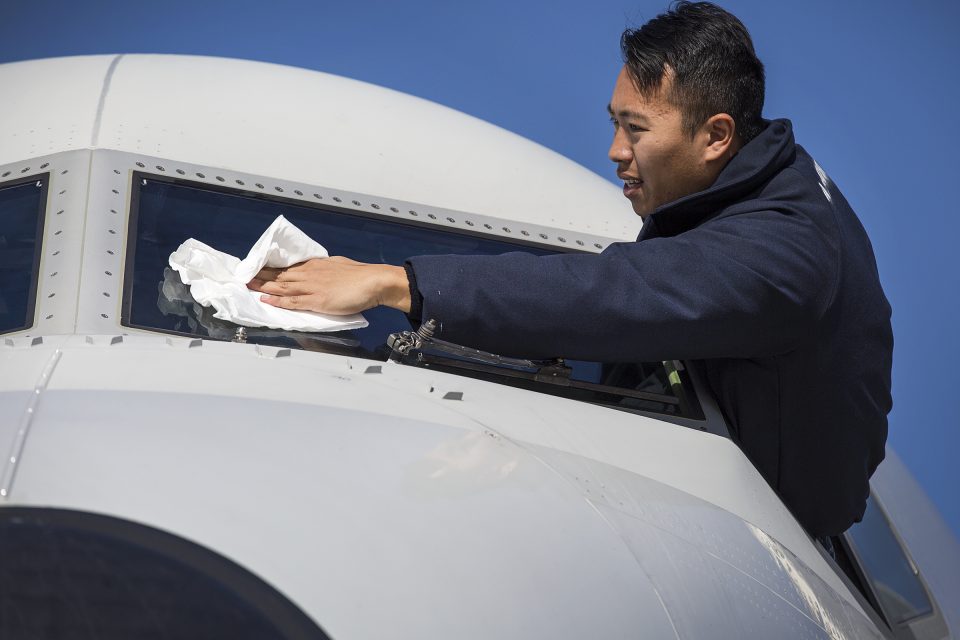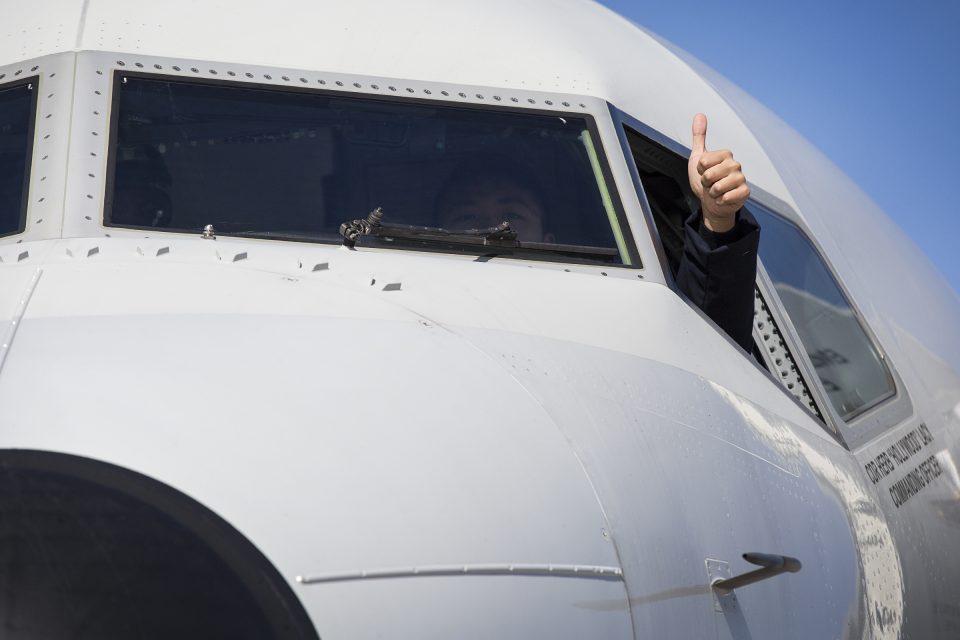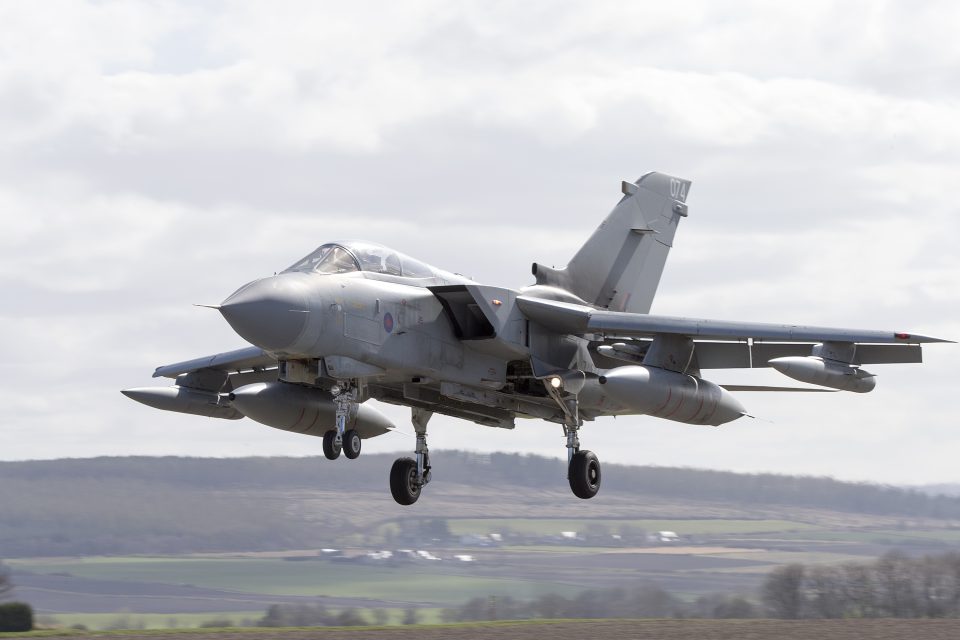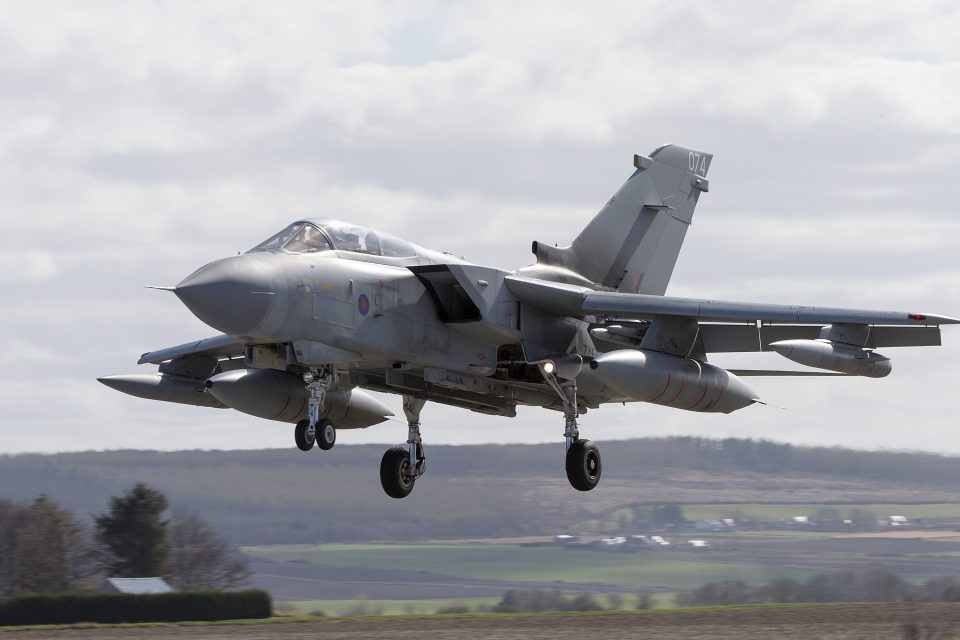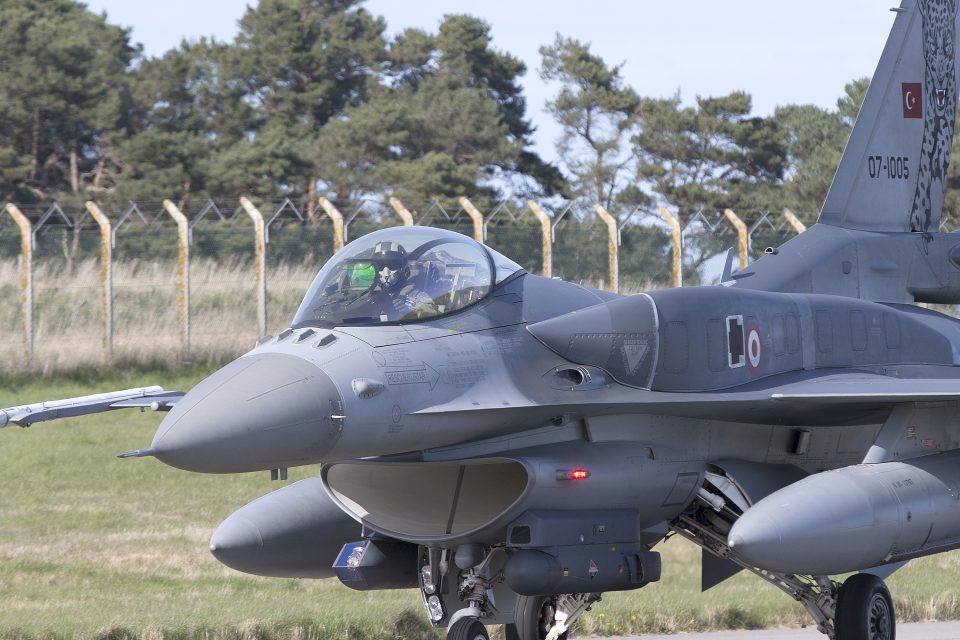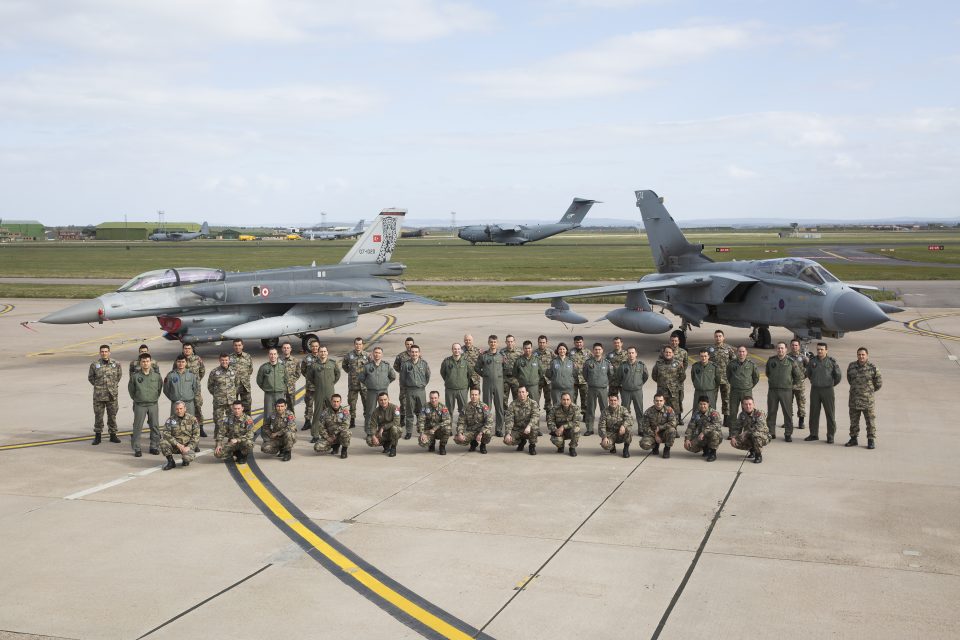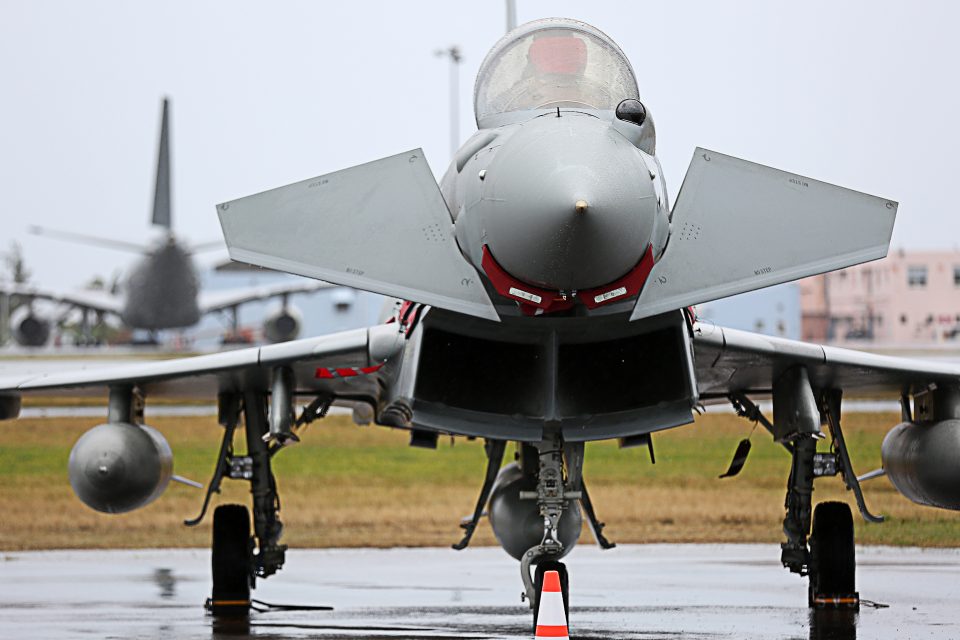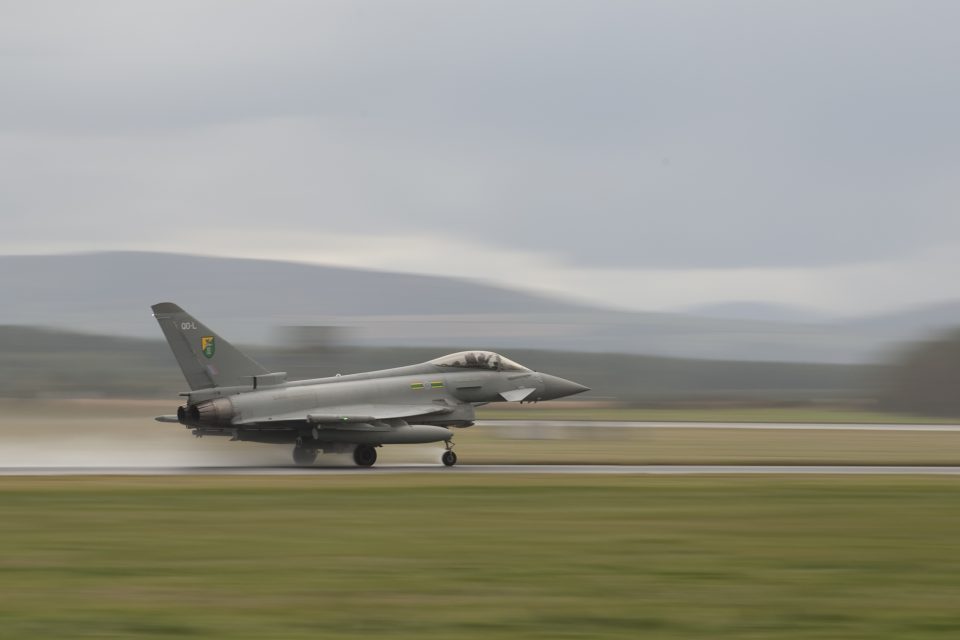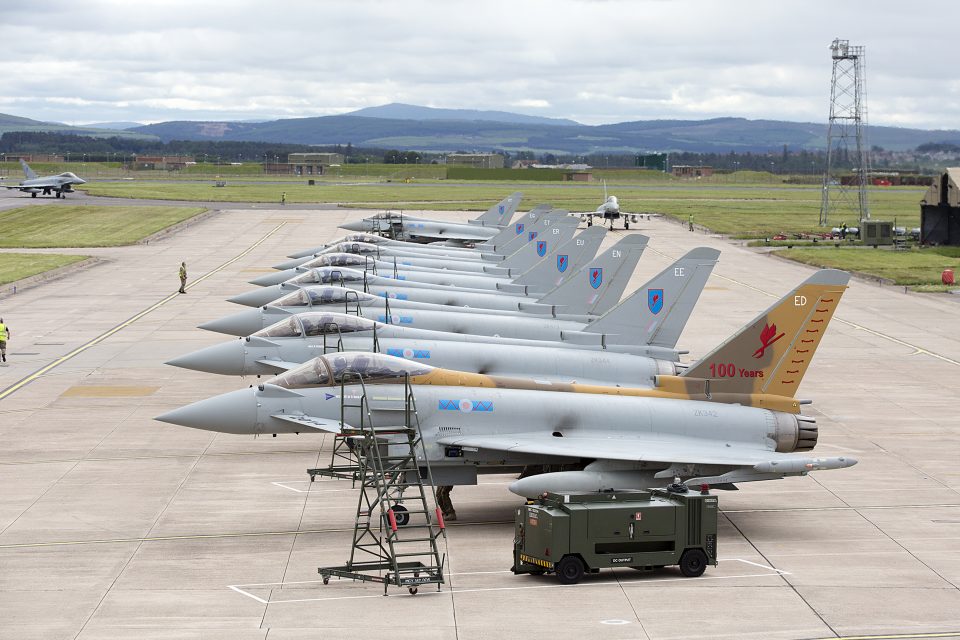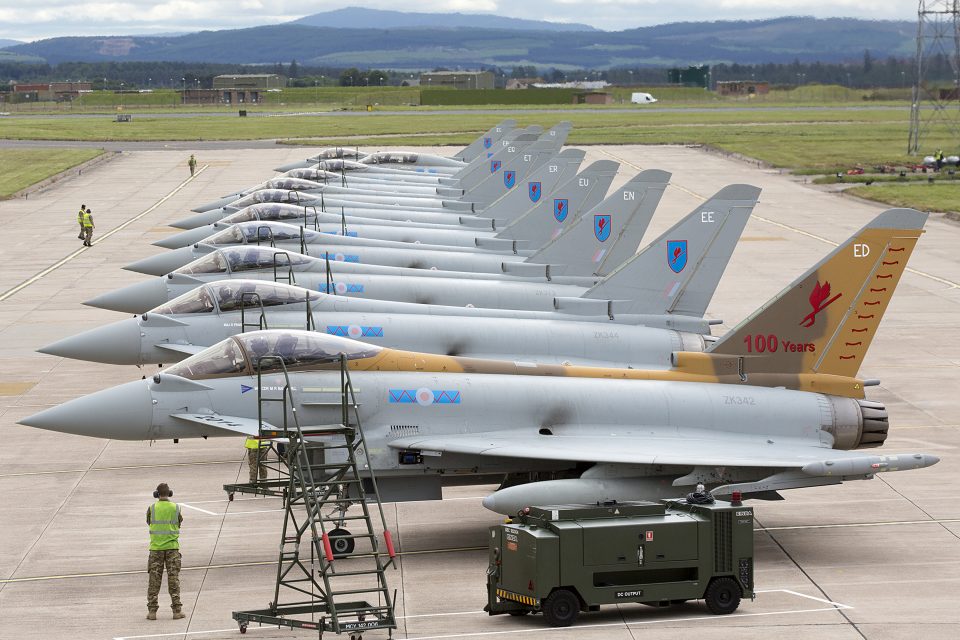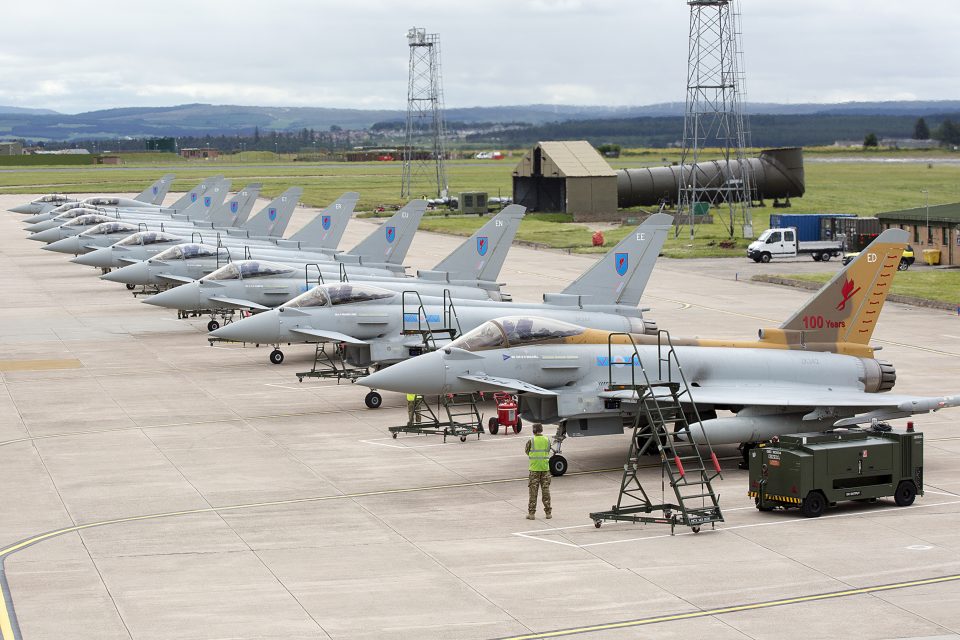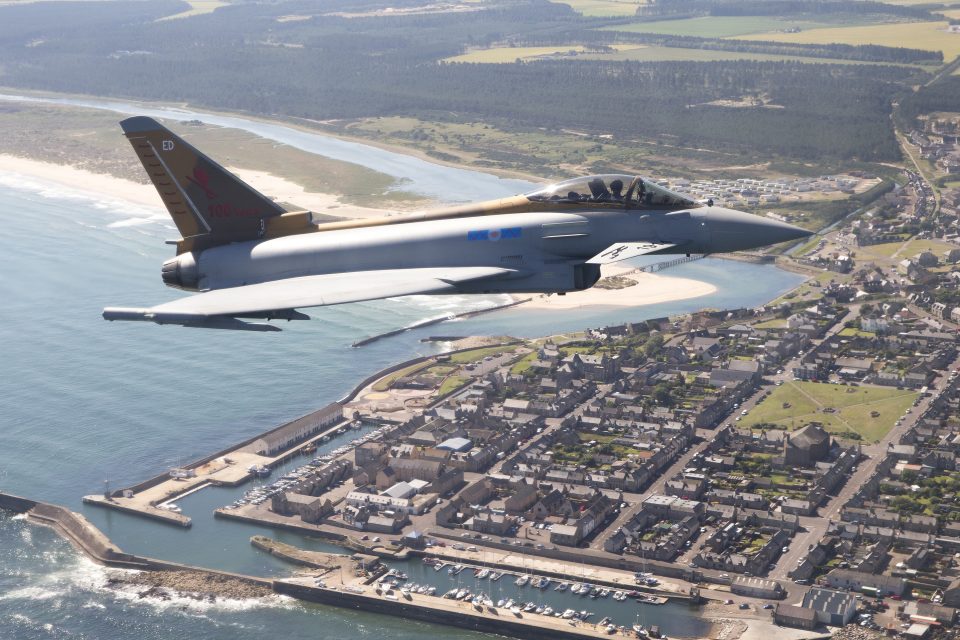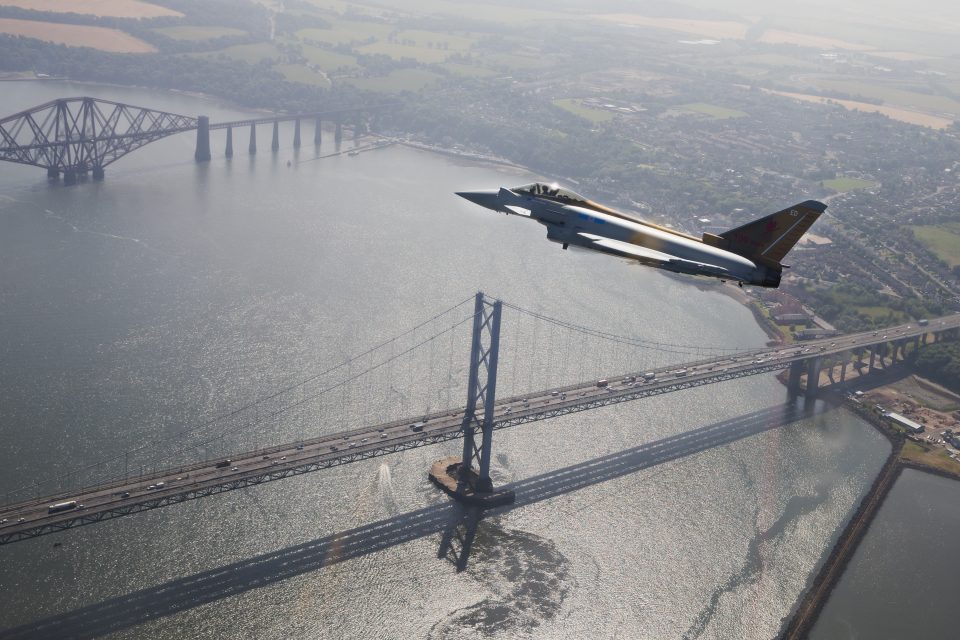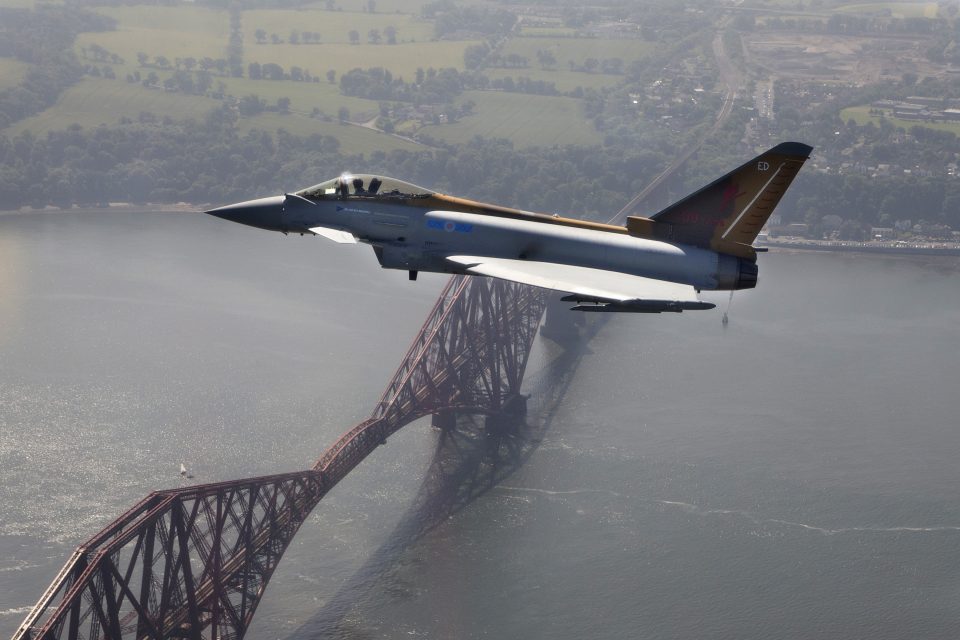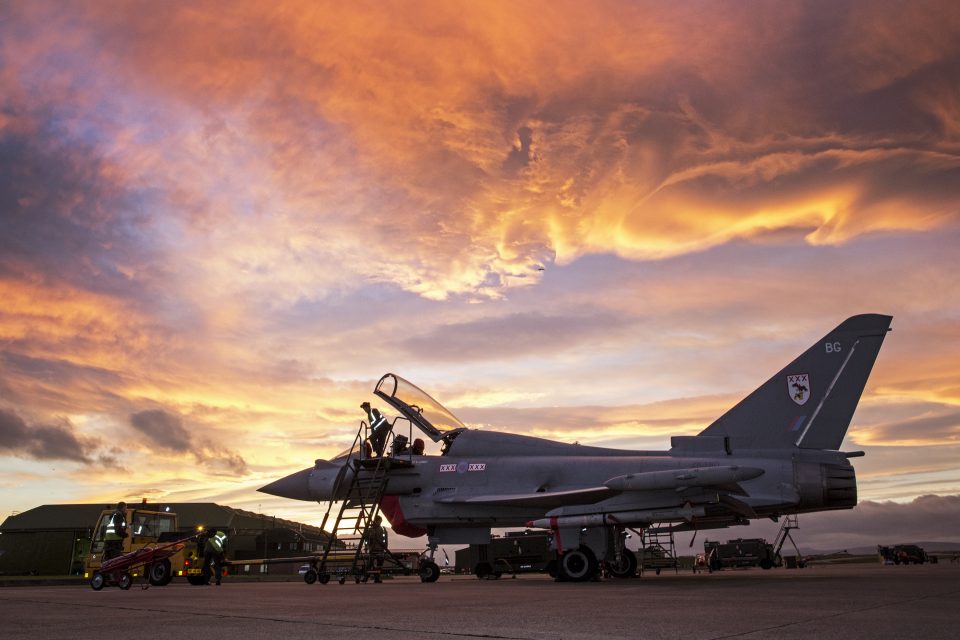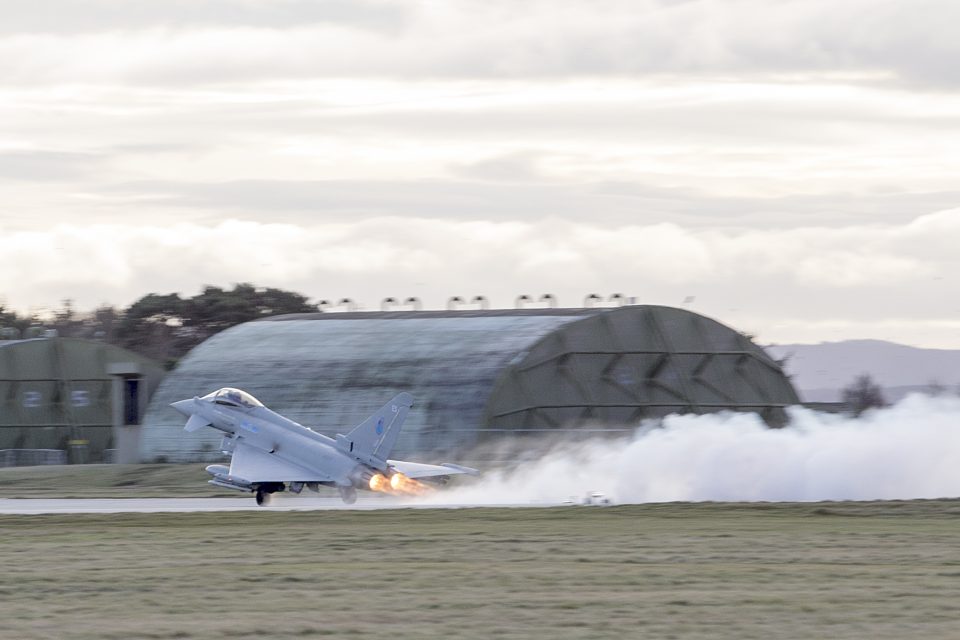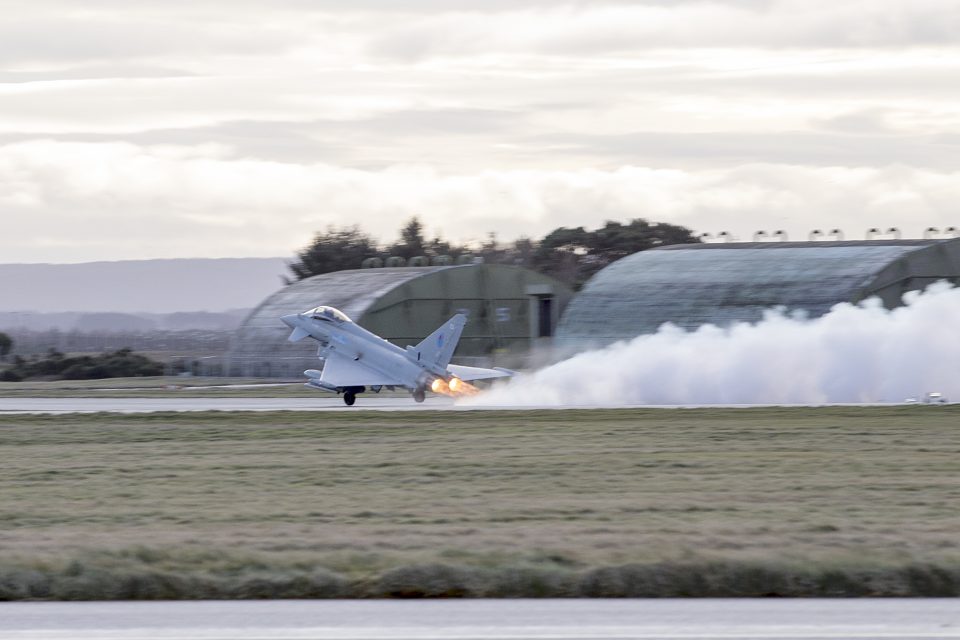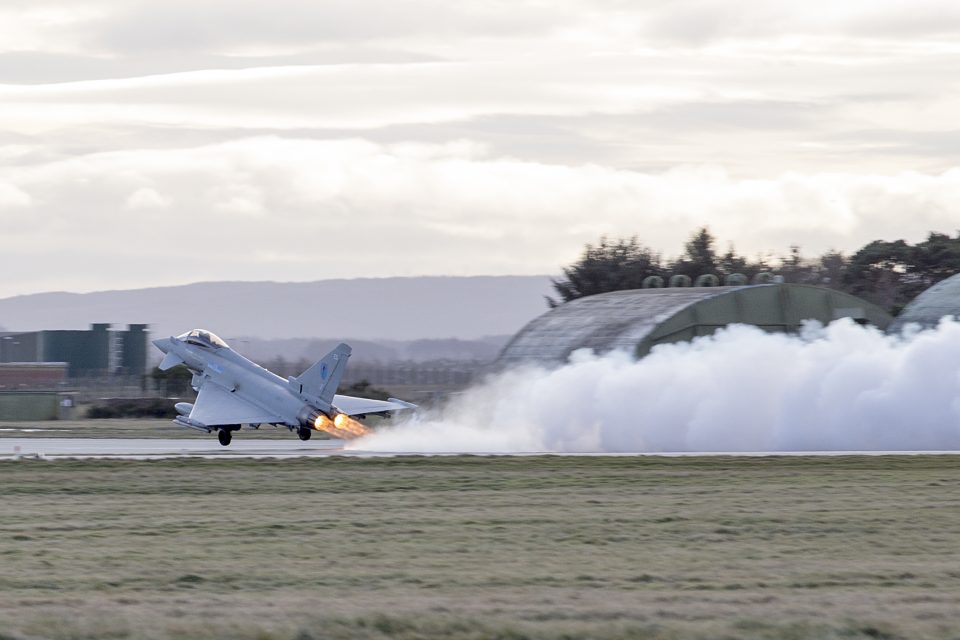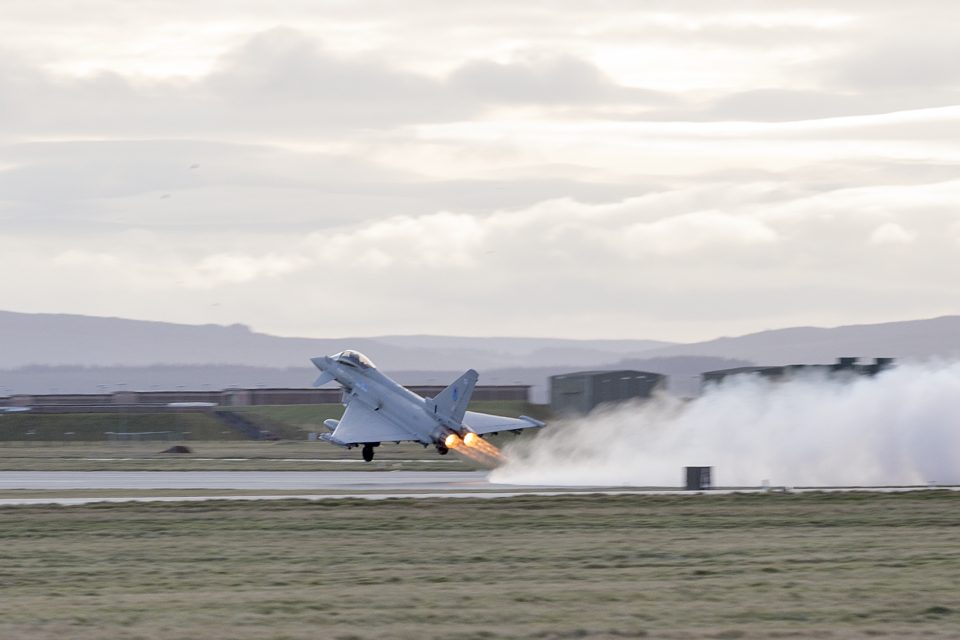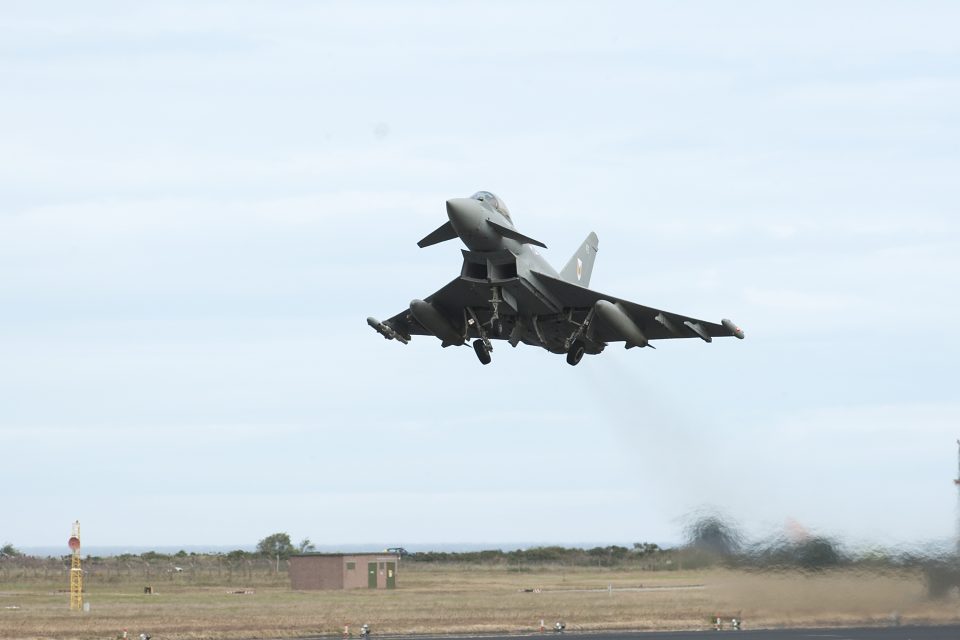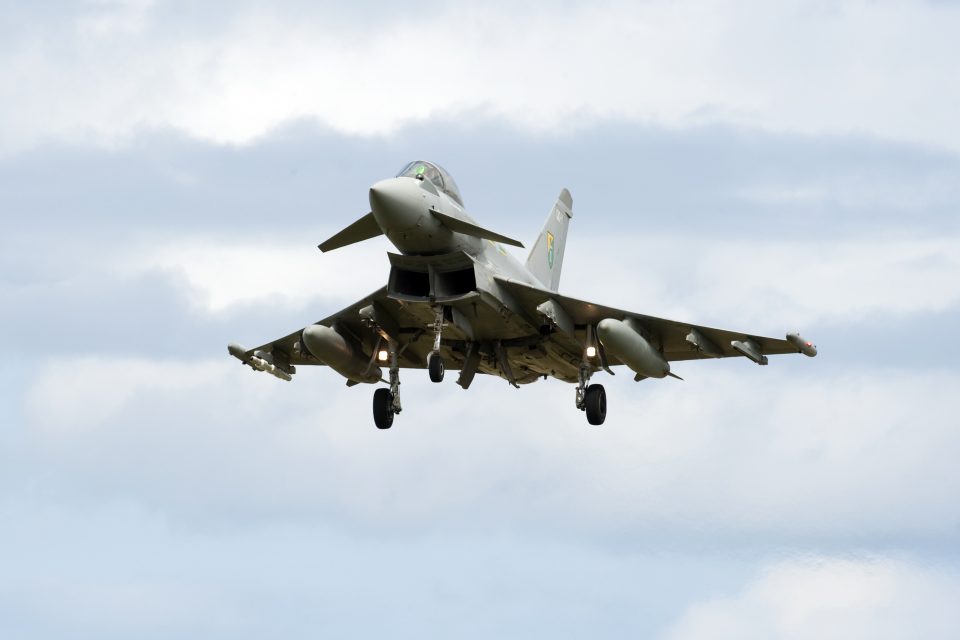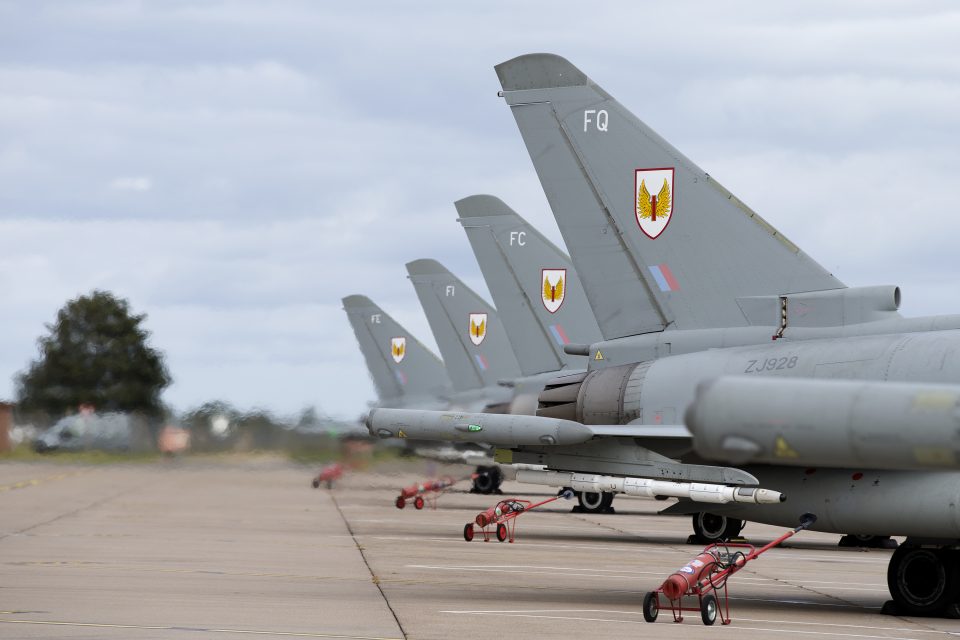2016-11-10 By Robbin Laird
RAF Lossiemouth currently is a Typhoon and Tornado base, but with the Tornados to be phased out within the next few years, the Typhoons will be joined by the P-8, which will probably operate as well from Lossie.
This provides the opportunity to integrate the Typhoons with P-8s with the F-35s, which will operate off shore from the new carriers or, in other words, shaping a kill web to protect the homeland and to anchor the defense of the Northern NATO countries.
In effect, Lossie will train to support the formation and evolution of a 21st century combat force in which a multi-mission combat fleet of Typhoons will work with the maritime-focused but land-based capable maritime combat system which is the P-8 (which will operate in the area, regardless of the final decision concerning where to base the fleet), and which, in turn, will work with the multi-tasking flying combat system which is the F-35.
It is clear that the base is well positioned to support the evolving dynamics of defense, not only for the UK homeland, but to provide a solid anchor within the defense system for the North Atlantic.
Recently, RAF Lossiemouth provided the air engagement piece for the major NATO Exercise Joint Warrior 2016.
Ben Hendry in story published in The Press and Journal on April 23, 2016 noted the following:
A major military training exercise hosted by RAF Lossiemouth has drawn to a close, with fleets of international aircraft jetting off from the base throughout yesterday.
Operation Joint Warrior brought some of the world’s most advanced fighter jets into the skies above Moray, where they staged a series of spectacular aerial training sessions.
More than 3,400 Nato troops took part in the land, sea and air war games event – including 22 ships, four submarines and more than 40 aircraft from a dozen Nato nations and three partner countries.
For the past two weeks the region has been buzzing with excitement about the event, with enthusiasts flocking from far and wide to glimpse the awe-inspiring machines in person.
But by yesterday afternoon, a hush had descended on the base as normality began to reassert itself.
One onlooker, who made several trips to the viewing area at the northern edge of the RAF Lossiemouth runway, hailed the success of the event.
The former RAF serviceman said that a fleet of Turkish F-16 jets had been the main attraction for a lot of the aviation enthusiasts who visited the area for the event.
He added: “The Turkish jets flew on missions twice almost every day, and were involved with some important training sessions.”
A German crew which had been participating in the war games exercise was unexpectedly called away shortly after it begun, and many experts believe they were summoned to assist with international operations.
A fleet of Poseidon aircraft attached to Patrol Squadron 10 at the “Red Lancers” Naval Air Station in Jacksonville, Florida, proved of special interest to observers and Lossiemouth personnel – as the airfield will secure its own brand new deployment of the craft in the coming years.
The hulking spy planes were stationed at the northern end of the runway throughout the exercise, and it is understood that RAF chiefs plan to keep the station’s new fleet in that area.
RAF experts who have maintained their surveillance skills since the UK’s fleet of maritime patrol aircraft was decommissioned in 2010 spent time conferring with the American pilots and learning more about the machines.
It is believed that they will train the crews who will work with the machines when they take up a permanent residence at RAF Lossiemouth.
https://www.pressandjournal.co.uk/fp/news/897689/joint-warrior-concludes/
When you put this exercise together with the recent Cold Response 2016 exercise in Norway, one definitely gets the point that NATO is treating Russian activity in the North of Europe very seriously.
During a visit to Lossie in April 2016, I had a chance to talk with Group Captain Godfrey whom I had first met when he was working on the RAF’s F-35 program.
And as a combat aviator who has flown a wide variety of aircraft, and working air power integration, he is well positioned to discuss the way ahead for the base at a crucial geopolitical location.
Group Captain Paul Godfrey, OBE has extensive experience of a range of combat aircraft through Harrier, F-16 and Typhoon. As a Harrier weapons instructor, he was the first non-US national to fly the F-16 CJ operationally in the SEAD (Suppression of Enemy Air Defense) role while on exchange with the USAF and has spent the last 10 years in the Typhoon program with two flying tours including 4th/5th generation fighter training with the F-22.
He also has around 100 flight hours in the Spitfire and 80 hours in the Hurricane.
We started by “Godders” providing an overview on the base and its history.
“The base has been through some significant transformations over the years.
It started off as a bomber-training unit in World War II, became a bomber base, and then at the end of war there was no requirement in the area for the RAF.
It was passed to the Royal Navy and every single type of aircraft they had through the 50’s and 60’s was deployed up here as HMS Fulmar.
Then a transformation began again when the base went from the Royal Navy back to the Royal Air Force in 1972, and then it hasn’t stopped. We were stable for the last few years with the Tornado fleet that replaced the Buccaneers, as there were four squadrons of Tornado’s between 1992-2015.
We’ve just come through another period of transformation on the base as I arrived in November last year, with three operational Typhoon Squadrons standing up.
The RAF is drawing down the Tornado fleet so we loose the operational conversion unit that we have up here next year.
One of my priorities for the two years that I’m here is to ensure that ‘future Lossie’ is planned and executed properly.
With P8 on its way, either in the short term with USN participating in Exercises or the longer term aspiration to base the RAF fleet here, there’s a huge opportunity in terms of cross-fertilization of ideas and TTP’s with the resident Typhoon force.
In terms of bringing F35 into the UK fleet and how we operate, whether it’s NATO, whether it’s other European nations, we will be working this opportunity as well within the Scottish region as the Queen Elizabeth carrier arrives for operations and allows flexible basing.
I think the possibilities are huge with where we’re going, not only in the Royal Air Force, but with working with the joint and allied forces in the region and beyond.”
Question: The recently concluded Joint Warrior 2016 is clearly a harbinger of some of these changes.
How do you see the exercise in light of your transformation opportunity and challenge?
Answer: We had P3’s, P8’s and Turkish F16’s here. There’s an opportunity right there just to look at how other nations do it. There were Canadians, Norwegians, French, Germans, Americans, all operating here.
And, I had a chance to see the P-8 and to get briefed by the crew. It is clearly not just a maritime patrol aircraft. In terms of the software upgradeability of the platform itself, in terms of what it brings straight out of the shop in terms of weapons loads, etc. it is very impressive.
I think that we will widen the P-8 rapidly from an MPA role out to a multi mission aircraft within seconds of getting our hands on it, because of the sensors and its electronic combat capabilities. It’s a 737 with weapon’s hard points; which provides a huge range of possibilitie. The fusion of data in the airplane is another key piece for us.
Having a single fused maritime picture in P-8 connected with the F-35 capabilities with what you bring from Typhoon and suddenly you have that single unified picture amongst a huge range of platforms. We are getting P8 at the same the Queen Elizabeth class carriers with their F-35s become operational for the Royal Navy and Air Force
Within 24 hours of the December vote in Parliament, our first Typhoons were dropping weapons in Syria.
Clearly the Tornado’s have been doing just as much as well. the mix of forces have performed magnificently, as we all knew they would.
Question: Reliability rates for the Typhoon in Operation Shader have been good?
Answer: Other than weather factors, we did not miss a single combat trip.
Question: You are here off the North Sea, so how is the cooperation with the other North Sea states in providing for air combat capabilities?
Answer: There’s a normal working relationship among the coalition forces.
The quick reaction task requires a close working relationship.
For example, when the Russians flew their Blackjack bombers through our area of operations heading to Syria to deliver their cruise missiles, those bombers were first intercepted by Norwegians and then handed off to us. Those bombers were obviously armed and headed for Syria and then returned on their multiple hour mission and then went back through the Black Sea.
We obviously are preparing the ground for more effective and integrated operations with our allies with dealing with this kind of operational challenge.
Question: Obviously, this is a challenging transition as well.
How is the RAF preparing for this transition?
Answer: It is.
The RAF has started a program, which we call Thinking to win.
It is about getting people to think differently to deal with new technologies and the new challenge.
I think over the last few years we’ve had to innovate because of budgets. The lack of budgets means that we couldn’t throw money at problems therefore we’ve had to think carefully about certain problems that we have and how would you solve them?
What we want to try and do now is just bring that into our normal approach.
Whether you’ve got the money or haven’t got the money you just always want to question why we doing it like that.
Can I do it differently?
Can I do it better?
I am trying to inculcate that here at the base and with whom we work in a joint or coalition environment.
We are clearly working to link the platforms we have and are getting differently or more effectively.
We will have a P8 simulator up here and a mixed synthetic domain. We’re enhancing the Typhoon synthetics in this area, and link them together every day of the week.
One can link them into the Coningsby wing in terms of Typhoons, Waddington in terms of the rest of the ISTAR force, we will be able to link them into Marham in terms of F35.At that point we can then really go to town in terms of developing the next generation of combat leaders and how we actually need fight in a 21st century environment.
It is not simply about preparing for the way we used to do it; it is thinking through how we need to do it in the coming years.
Question: Obviously the training side of the preparation for operations.
How does the synthetic training work to prepare the force?
Answer: We have the opportunity now to work the Tornados with Typhoons through live and virtual training and this gives us an advantage when we deploy.
We also have 5 Force Protection Wing here. That constitutes an HQ, an RAF Regiment Field Squadron and a reservist, Royal Auxiliary Air Force Regiment Field Squadron.
Just by getting guys talking together we’ve had the RAF regiment JTACS in the simulators with the Tornado and the Typhoon crews so that theyget the benefit of the real JTACs talking to them on the radio, during a simulated mission.
The JTAC gets controls that you wouldn’t necessarily get out in the real world because he doesn’t have the live assets available to him the whole time.
For our guys working up to the operations in Syria and Iraq, we’ve got scripts and events that have actually happened combined with the data base in the simulator, so that when they walk out the door here and land in Cyprus for the first time, they are ready.
It may be only the first time that landed at Cyprus in the real world, it’s only the first time they been into Syria and Iraq in the real world, but they’ve done it 10’s of times prior to that.
They’ve spoken to real guys on the ground, that ground just happened to be three feet away from him in the simulator up here at Lossiemouth, but that is huge in terms of preparing our people for what they going to do.
And that lays the foundation for shaping the way ahead as new aircraft, and new capabilities enter the fleet and the force.
Question: In short, Lossie is a great place to be for you?
Answer: As you can see out the window, the beautiful sunshine, the beaches and the warm welcome of the Scottish people, there’s no other place I would rather be.
The first slideshow highlights planes involved in the Joint Warrior exercise earlier this year and the photos are credited to the RAF.
The second slideshow highlights Typhoons operating at Lossie and are credited to the RAF.
For earlier discussions with Group Captain Godfrey see the following:
https://sldinfo.com/the-royal-air-force-and-the-f-35-shaping-an-airpower-transition/
https://sldinfo.com/visiting-the-royal-air-force-battle-of-britain-memorial-flight/


